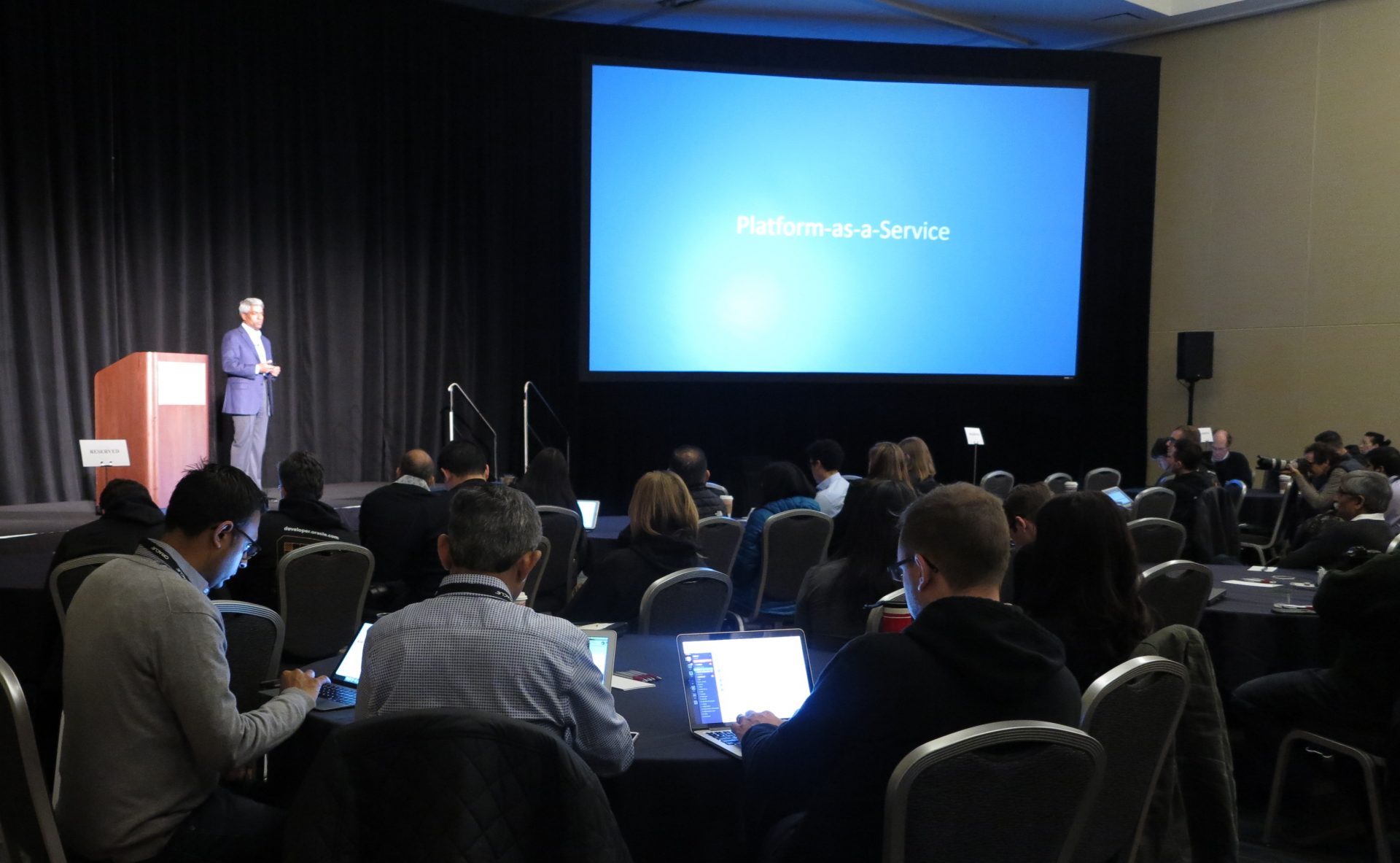
Oracle today kicked off its 20-city worldwide tour in the furtherance of its cloud offerings. The first Oracle Code event today in San Francisco was keynoted by Thomas Kurian, president of Oracle product development. He walked attendees through the finer points of setting up systems and storage within the Oracle cloud.
Kurian demonstrated specific capabilities within the Oracle cloud, including configuration of load balancers, web servers and storage systems. He explained that the Oracle cloud begins as infrastructure-as-a-service, but offers more on top of that layer.
(Related: Qubole added to Oracle’s cloud)
“The second piece we’re working on is platform-as-a-service. If you took our IaaS and you wanted to deploy your software on top of that, you’re responsible for all the manual labor associated with writing the software, backing up the software, encrypting it, and maintaining it,” said Kurian.
“For the platform layer, which sits on top of IaaS, what we’re really doing is eliminating all the manual work associated with the platform layer. We’re not doing that with human beings; we’re doing that with software itself. We’re providing you a complete platform that includes all these elements, and automating it through software and machine.”
Other elements touted by Kurian include the Oracle cloud’s focus on microservices. To enable users to build with them, Oracle has built out Docker-based infrastructure for running containers.
Kurian said the Oracle cloud offers a Docker registry and discovery service, rather than requiring users to build their own. He even said that Oracle’s cloud offers Redis as a database for doing caching.
That’s news to Ofer Bengal, CEO and cofounder of Redis Labs, who had little familiarity with Oracle’s cloud offerings, at least from a customer-interest perspective. When asked about Oracle’s cloud, he was unaware of anyone using Redis there, and replied that most customers used AWS, with some Azure and IBM being the alternative choices.
One of the reasons for that, he suggested, is that Oracle’s cloud and database are not necessarily the same thing. “The dominant position of Oracle and IBM is probably not going to last. This is not because they don’t have good databases, but because the whole space of databases is becoming more and more specific to use cases. Today modern applications in IoT and in machine learning use several databases, side-by-side,” he said. “They’ll need to adjust to the new breed of developers. That’s why we don’t see them almost at all in the cloud.”
Oracle is not alone in needing to play catchup in the cloud market. Google is also attempting to ramp up its cloud offerings, and last week it announced an open beta of its Spanner transactional database. Spanner was designed by a team led by Eric Brewer, the man who formulated the CAP theorem.
Amit Zavery, senior vice president and general manager of integration products at Oracle, said that the company supports and services its Redis instances itself. He also said that Oracle’s cloud is more open than Amazon’s and Google’s because it was designed to avoid lock-in.
“If you have users who say, ‘I want to use the datacenter of my own choice,’ you can,” said Zavery. “I think Google and Amazon have more lock-in than you see with Oracle. I can use my full stack in the datacenter of my choice. You can’t do that with Amazon or Google. We are definitely not architecting in any way for lock-in.”
Zavery added that Oracle’s cloud strength is in its cloud as a platform, not just as infrastructure. “The battle is going to be for the platform over time. Infrastructure is becoming table stakes,” he said. He added that Oracle needs to do a better job promoting the use of MySQL in its cloud offerings.
Oracle Code wasn’t just about Oracle’s cloud, however. The company also invited Douglas Crockford, senior JavaScript architect at PayPal, to discuss some of the problems that exist in modern programming languages, and to advocate for solutions that could be implemented in future languages.
As an example, he said, math in JavaScript is a mess: 0.1 + 0.2 does not equal 0.3. JavaScript
also ignores the associative property of mathematics, meaning that the order in which items are calculated affects the results, even when it shouldn’t. This problem exists in other languages as well.
As a remedy, Crockford advocated the use of DEC64, a decimal floating point format that takes its inspiration from computers as old as the Burroughs B5000 from the 1960s. Crockford advocated for DEC64 to be the only number type used in any newly crafted programming languages, thus eliminating inconsistencies in the handling of basic math that exist in some environments.
Crockford then went on to advocate for better computer and software security through programming languages specifically designed to deal with security issues from the ground up. He ended his talk with advice: “Please be careful out there. The web is big and full of errors.”





